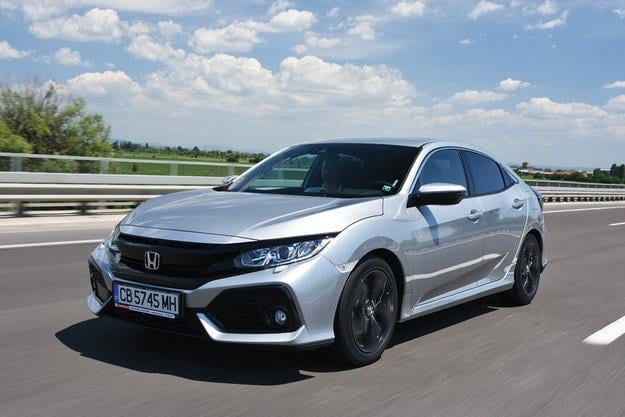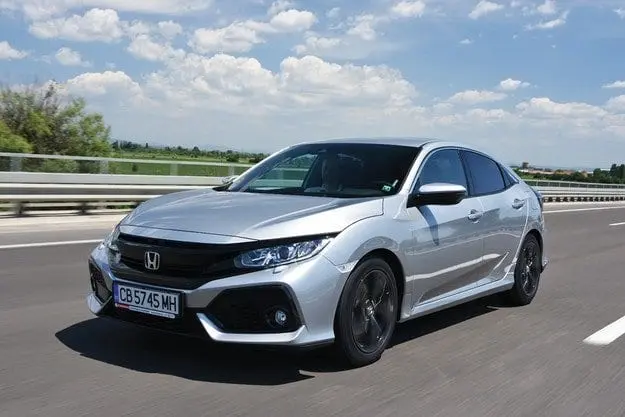
Тест драйв Honda Civic i-DTEC: самурай с дизельным сердцем

Тестирование нового издания бестселлера с впечатляющим 1,6-литровым дизелем
Десятое поколение Civic значительно отличается от своих предшественников. Модель стала значительно крупнее, приблизившись по размеру к среднему классу. Кузов выглядит динамичнее не только за счет большей ширины и длины в сочетании с меньшей высотой, но и благодаря ярким выразительным средствам в дизайне. Даже в своей самой стандартной версии Civic напоминает хорошо оборудованный гоночный автомобиль и в то же время основан на новой платформе с гораздо большей прочностью, устойчивостью к скручиванию и складыванию. Благодаря новой архитектуре и более широкому использованию более легких материалов, таких как высокопрочная сталь, модель стала легче на 16 кг, несмотря на увеличение длины версии хэтчбека на целых 136 мм. К этому добавляется серьезная работа инженеров в области аэродинамики. Практически все днище покрыто аэродинамическими панелями, аналогичную роль играет танк, смещенный сзади и имеющий форму, обеспечивающую максимальный поток. Несмотря на острые формы, каждая деталь тщательно продумана с точки зрения аэродинамики — например, форма передней решетки, направление воздуха к двигателю, где образуется множество вредных вихрей, или каналы, образующие воздушные завесы вокруг колес.
Один из самых высокотехнологичных дизелей на рынке
Яркое видение — неоспоримый факт в новом Civic, но на самом деле ведущим принципом в конструкции Civic была эффективность, и после появления совершенно новых поколений бензиновых двигателей с турбонаддувом с тремя и четырьмя цилиндрами и рабочим объемом 1,0 и 1,5 литровый дизельный двигатель вписывается в эту максиму. Хотя он имеет совершенно новую технологию для полностью гибридной силовой установки, работающую так же, как и у Toyota, но без планетарных механизмов (для этого используются пластинчатые муфты), Honda не намерена отказываться от дизельного двигателя в этом классе. Инженерно-интенсивная компания вряд ли легко откажется от проверенного высокоэффективного теплового двигателя, такого как дизельный.
В плане производительности 1,6-литровый i-DTEC с его 120 л.с. не изменился. при 4000 об / мин и максимальный крутящий момент 300 Нм при 2000 об / мин. Но это только на первый взгляд. В новом двигателе инженеры заменили алюминиевые поршни на стальные, как и их коллеги из Mercedes в новых поколениях четырех- и шестицилиндровых дизельных двигателей. Этим достигается несколько эффектов. Более низкий уровень теплового расширения стали при повышении рабочей температуры обеспечивает сохранение достаточно большого зазора между поршнем и алюминиевым блоком, благодаря чему трение значительно снижается. В то же время более высокая прочность стали по сравнению с алюминием позволяет создавать компактные и легкие поршни, в которых еще есть большой запас. И последнее, но не менее важное: более низкая теплопроводность стали приводит к более высокой температуре детали, соответственно камеры сгорания, с меньшим тепловыделением. Это не только увеличивает термодинамический КПД, но также улучшает условия воспламенения топливно-воздушной смеси и сокращает время сгорания.
И это еще не все: другие изменения в двигателе касаются ребер жесткости алюминиевого блока цилиндров, которые снижают шум и вибрацию и повышают прочность конструкции. Уменьшение нагрева и оптимизация охлаждения привели к уменьшению толщины стенок головки и, соответственно, веса.
Новый i-DTEC основан на новом турбокомпрессоре Garrett с изменяемой геометрией и архитектуре с точным контролем скорости с помощью электроники. У него меньшие потери, чем у агрегата предыдущей версии двигателя. В системе впрыска Bosch используются соленоидные форсунки с рабочим давлением до 1800 бар. Высокий КПД двигателя во многом обусловлен интенсивным турбулентным потоком воздуха, создаваемым спиральными каналами в головке. Эта машина, оснащенная преобразователем оксидов азота, также является одним из первых двигателей, прошедших испытания в условиях реальных выбросов (RDE). Помимо механической трансмиссии, которая имеет типичную для моделей Honda точность, с середины 2018 года будет доступна девятиступенчатая трансмиссия ZF.
Твердо стоять на дороге
Подобно бензиновым двигателям с турбонаддувом в нынешнем Civic, новый i-DTEC сочетает в себе все преимущества легкого (в базовой версии автомобиль весит всего 1287 кг) и более прочного кузова, новой передней и многорычажной задней подвески, а также отличной тормоза, которые уже показали свои качества в тестах auto motor und sport. Высокий крутящий момент является обязательным условием для получения всестороннего удовольствия от вождения, а продолжительный и приглушенный стук дизельного двигателя скорее добавляет шарма звуковой картине при наборе скорости. Со всеми комбинациями уменьшения рабочего объема, количества цилиндров и отключения некоторых из них, современных турбо-технологий и т. Д. Ни один из высокотехнологичных бензиновых двигателей не может достичь реального расхода около 4 л / 100 км при умеренной езде. Поведение на дороге также характеризуется трудноописуемым чувством солидности — автомобиль одновременно точен в управлении и чрезвычайно устойчив. Поездка также находится на типично высоком уровне для бренда.
В интерьере вы также найдете много ощущений Honda — как в расположении приборной панели, так и в общем качестве модели, произведенной в Соединенном Королевстве. Перед водителем находится TFT-экран с опциями индивидуализации, и в стандартной комплектации все версии оснащены интегрированной системой пассивной и активной безопасности Honda Sensing, в том числе множественными вспомогательными системами на основе камер, радаров и датчиков. Honda Connect, с другой стороны, является частью стандартного оборудования на всех уровнях выше S и Comfort и включает возможность работы с приложениями Apple CarPlay и Android Auto.
Текст: Боян Бошнаков, Георгий Колев
